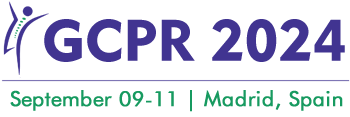Title : Assessment and rehabilitation of unilateral spatial neglect using haptic feedback and virtual reality
Abstract:
The syndrome of UNILATERAL SPATIAL NEGLECT (USN) is a complex and heterogeneous syndrome characterized by reduced awareness of stimuli on one side of space, despite no sensory loss. Patients with USN experience a wide range of functional spatial deficits, including eating food from only one side of the plate, bumping into objects while walking, and shaving only one side of their face. The diagnosis and rehabilitation of USN pose challenges due to its complexity and variability across different sensorimotor modalities [1]. Traditional typically involve paper and pencil procedures that isolate cognitive functions from real-life contexts.
Aim: The aim of this study is to assess the effectiveness of an innovative and effective approach and explores the potential of virtual reality (VR) technologies for the evaluation and rehabilitation of USN syndrome in ecological environment.
Methods: We use our homemade haptic device with a virtual hospital - based tool, different modules and difficulty levels [2]. Two groups were examined: the first group comprised of USN patients with post-right ischemic stroke (n=12; mean age=61.2 years; 9 males, 3 females), while the second group served as healthy controls (n=30; mean age=44 years; 22 males, 8 females). The experiments followed standard ethical practices. The ecological assessment of the USN was conducted using the Catherine Bergego Scale (CBS) [3], across various levels of difficulty.
Results: The experiment shows a statistically significant difference between D30 and D90 compared to D1 (p-values ranging from 0.002 to 0.003). The analysis of the compared absolute variations of D90 compared to D1 and D30 of the different tests shows that maintaining the gain obtained was possible and could even last over time.
Discussions: The overall analysis of the CBS revealed the possibilities of transfer of acquired knowledge from the test situation to daily life were satisfactory, particularly in improving phenomena of neglect centered on the body (such as toileting and dressing) or on distant spaces involved in travel. Maintaining the obtained results was possible, which demonstrates the positive impact of the technique.
Conclusions: The proposed approach validates the effectiveness of the experimental method using virtual reality as a diagnostic and therapeutic tool. The virtual reality offers advantages such as ecological validity, reproducibility, and measurability compared to traditional methods. This approach goes beyond traditional paper and pencil procedures and considers the challenges associated with USN since it integrates cognitive functions with real-life contexts and enhances patient outcomes and quality of life using VR technologies.



